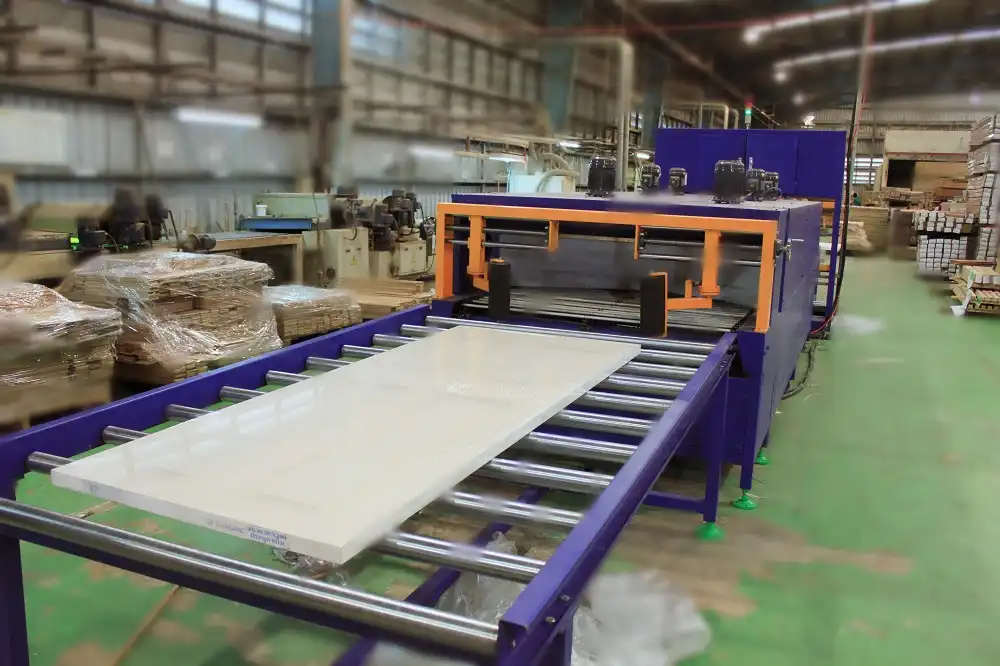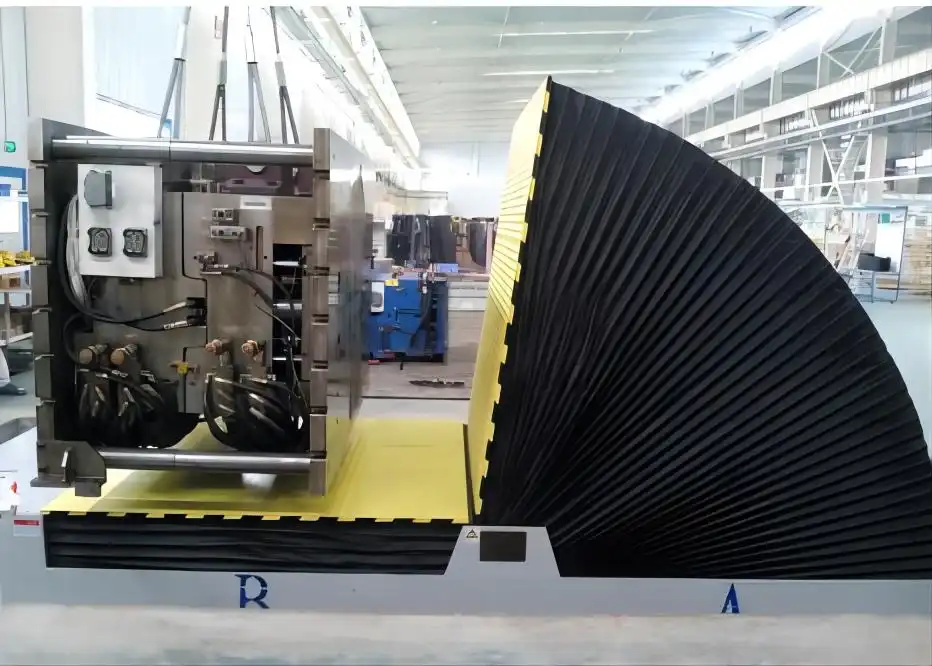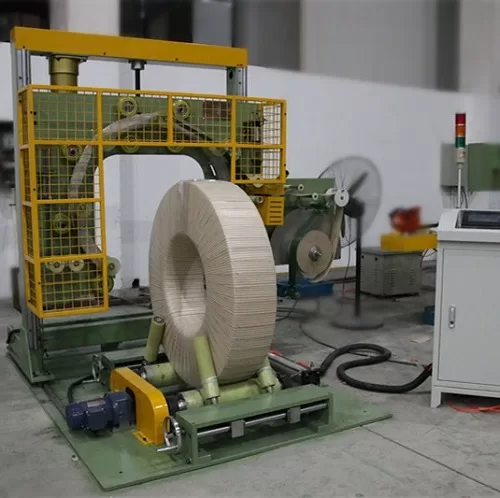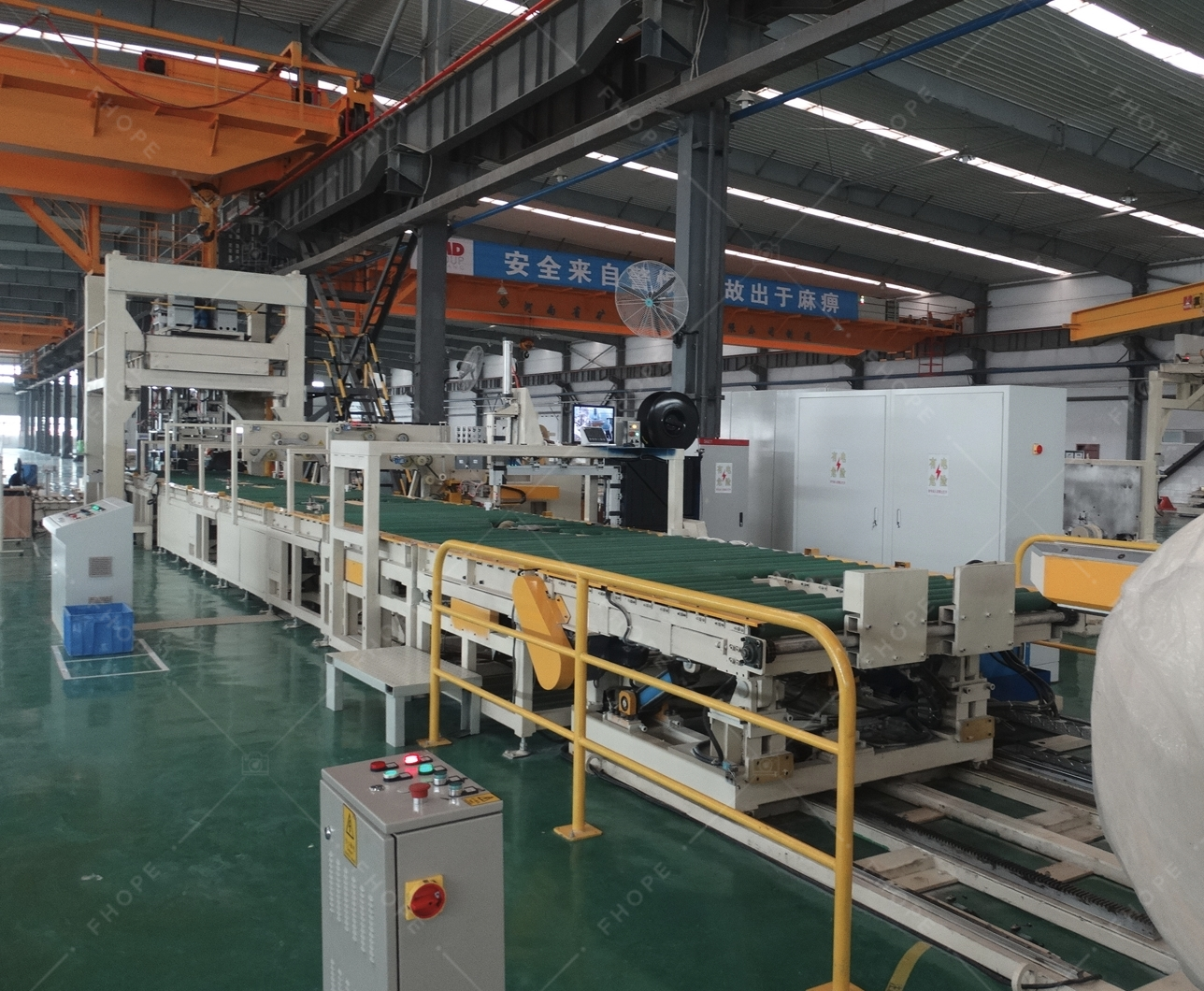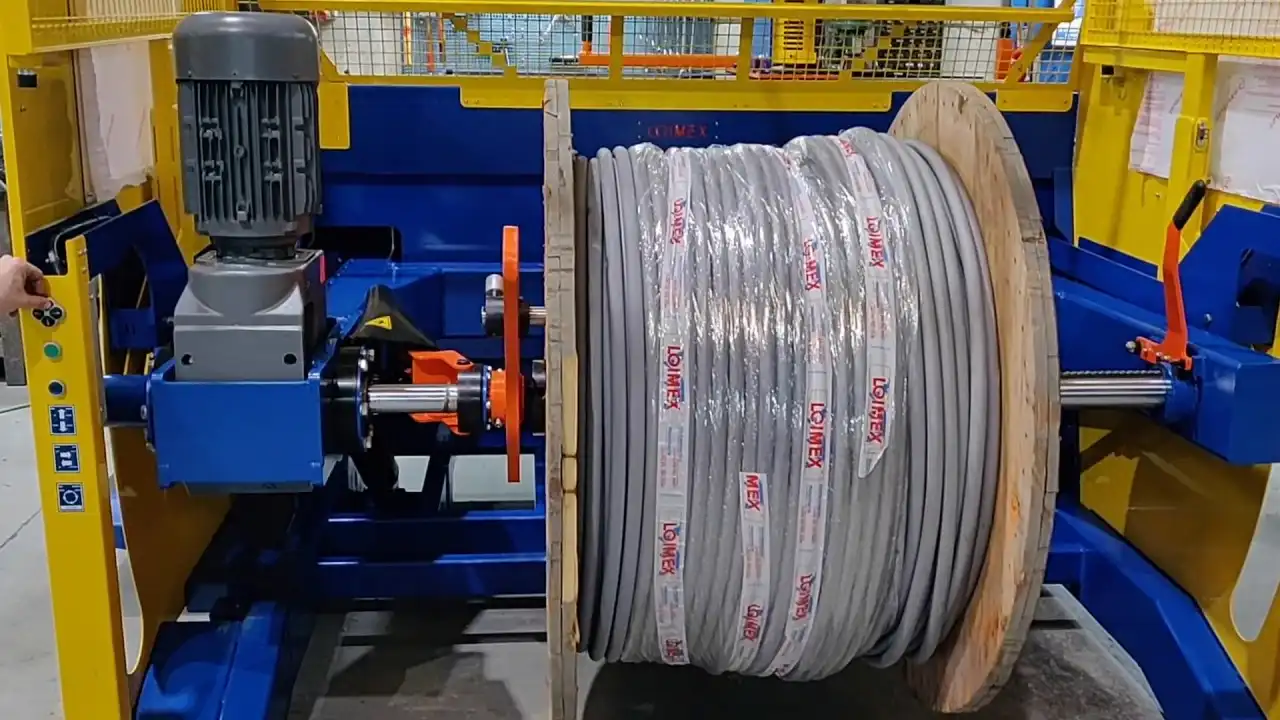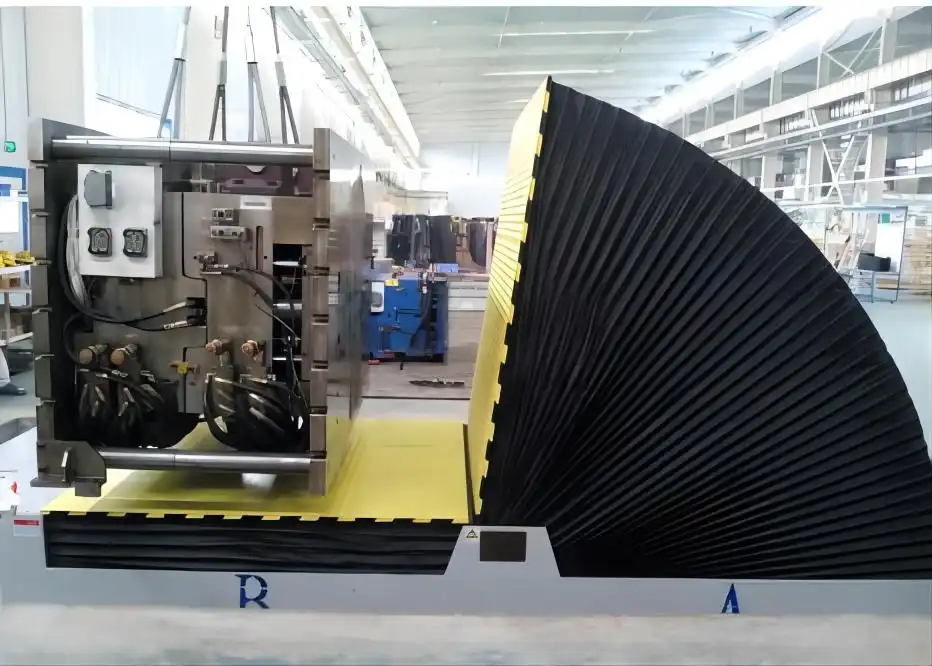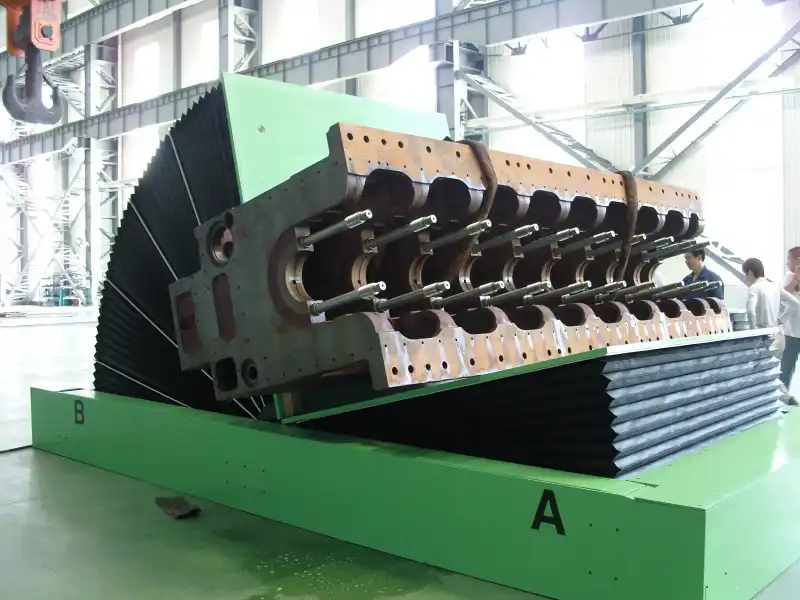How to Optimize Pipe Bundling Machine Performance for High-Volume Operations?
Optimizing pipe bundling machine performance is essential for high-volume operations. Efficient bundling directly impacts production speed, reduces downtime, and minimizes labor costs. By focusing on key areas, manufacturers can significantly enhance their throughput and overall profitability.
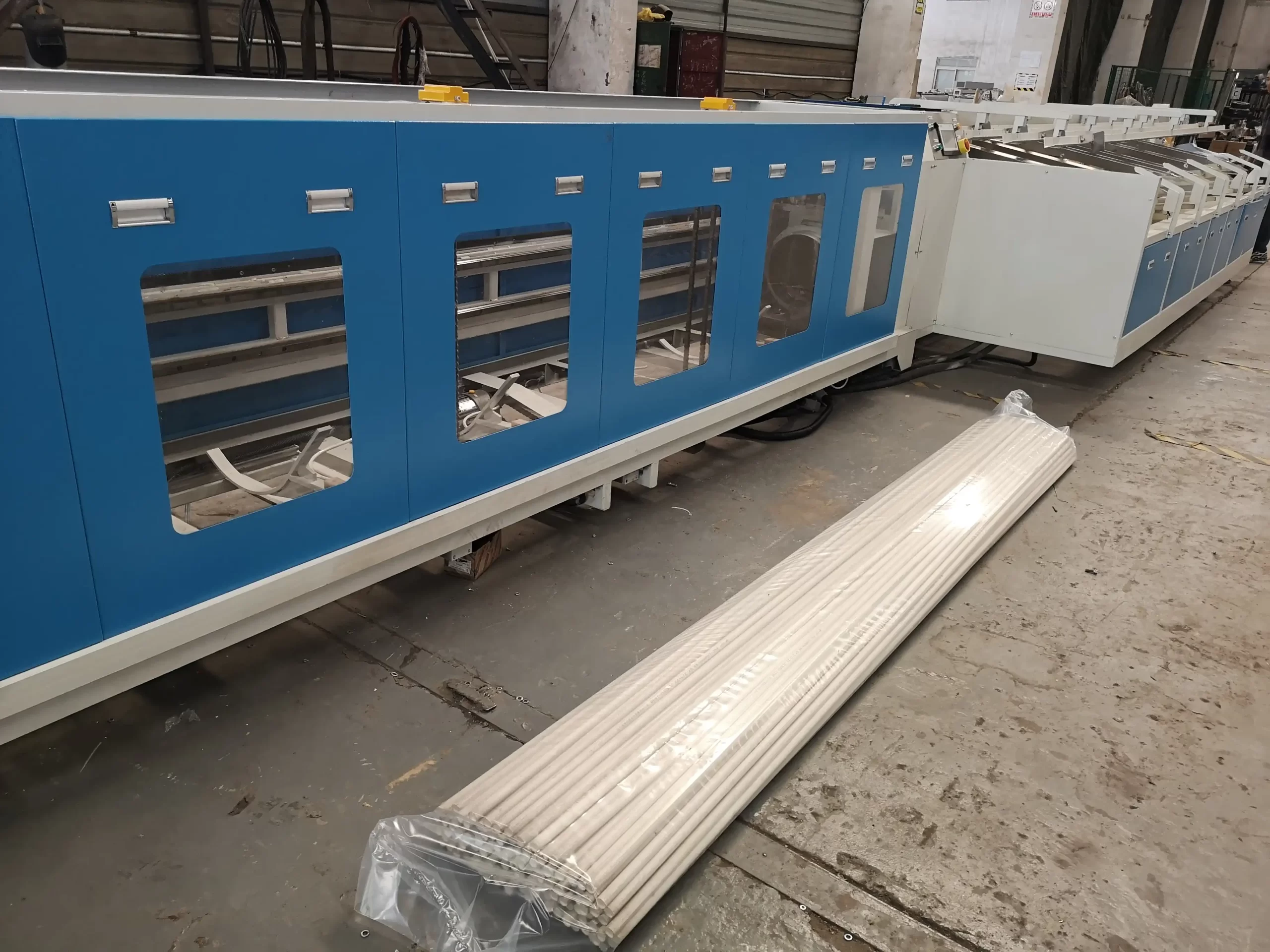
To optimize pipe packaging efficiency for high-volume operations, focus on regular maintenance, proper operator training, and optimized machine settings. Implementing efficient material handling processes and investing in automation can significantly boost throughput and reduce downtime.
Let’s delve into the practical strategies you can implement to maximize the output and reliability of your pipe bundling machines, ensuring your operations run at peak efficiency.
1. Fine-Tuning Machine Settings for Optimal Throughput
Optimizing pipe bundling machine settings is paramount for achieving high-volume throughput. Correct adjustments minimize errors, reduce material waste, and ensure consistent bundle quality, all contributing to faster processing times.
Fine-tuning machine settings is crucial for maximizing throughput in high-volume pipe bundling operations. This involves precisely adjusting tension, speed, and wrapping parameters to suit different pipe dimensions and materials. Regularly reviewing and refining these settings ensures consistent bundle quality and minimizes downtime caused by errors or material waste.
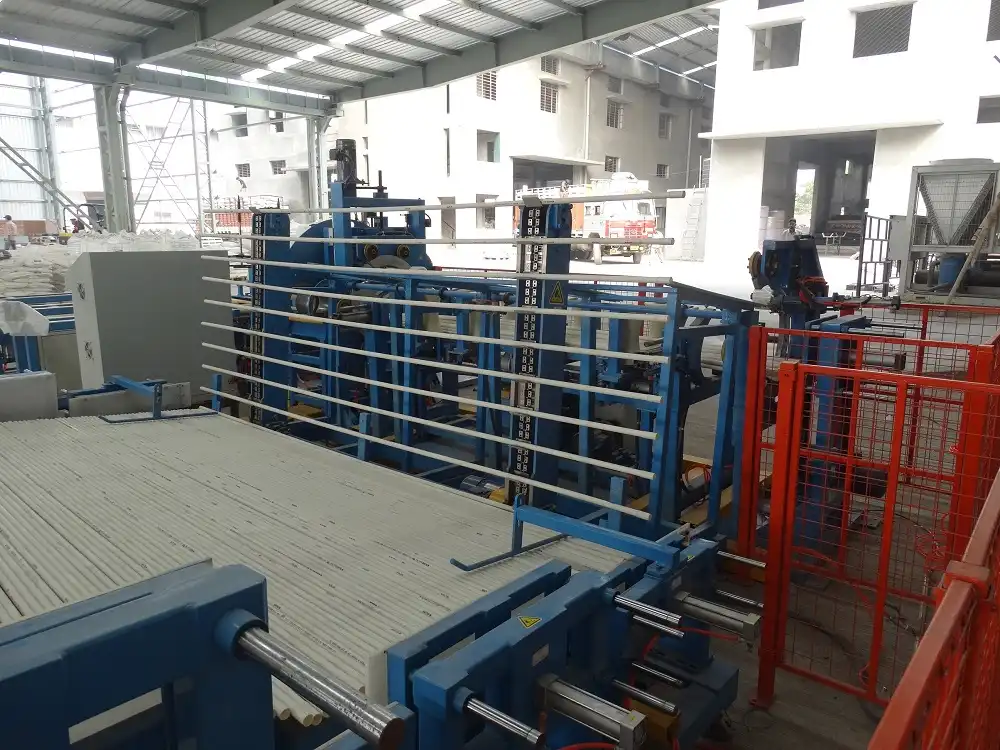
Mastering the Art of Adjustment: A Deep Dive into Machine Settings
To truly unlock the potential of your pipe bundling machine, it’s not enough to simply know the basic settings. Understanding the subtle interplay between various parameters is key. Consider these critical aspects:
1. Material-Specific Settings
Different pipe materials demand different handling. Thin-walled PVC requires a gentler touch than heavy-gauge steel.
-
Tension Control: Insufficient tension leads to loose bundles, while excessive tension can damage the pipes, causing material waste. Modern machines offer programmable tension control, allowing you to save specific settings for each material type.
-
Wrapping Speed: Optimize wrapping speed based on the pipe’s diameter and material. Higher speeds can be used for smaller diameter pipes and more robust materials. Lower speeds are recommended for larger diameter and more delicate materials to prevent slippage and damage.
2. Data-Driven Optimization
Don’t rely on guesswork. Track machine performance metrics to identify areas for improvement.
- Key Metrics: Monitor metrics like cycle time, bundle rejection rate, and material consumption. Identify any patterns that indicate suboptimal settings.
- Feedback Loops: Implement a feedback loop where operators can report issues and suggest adjustments. Use this information to continuously refine your machine settings.
3. Quick Changeover Procedures
Downtime during changeovers can significantly impact throughput. Implement standardized procedures to minimize this downtime.
- SOPs: Develop detailed Standard Operating Procedures (SOPs) for each product type. These SOPs should outline the precise machine settings required for each material and dimension.
- Tooling & Fixtures: Use quick-release tooling and fixtures to facilitate fast and easy changeovers.
4. The Human Element: Training & Expertise
Even with the most advanced machines, skilled operators are essential.
- Comprehensive Training: Ensure operators receive comprehensive training on all aspects of the machine, including setup, operation, troubleshooting, and maintenance.
- Knowledge Sharing: Encourage operators to share their knowledge and best practices with each other. Create a culture of continuous learning and improvement.
5. Evaluating Advanced Features
Modern pipe bundling machines are equipped with a range of advanced features designed to optimize performance.
- Automatic Tension Control: Maintains consistent tension throughout the wrapping process, regardless of pipe diameter or material.
- Adjustable Wrapping Patterns: Allows you to customize the wrapping pattern to suit the specific requirements of each product.
- Quick-Release Mechanisms: Simplifies and accelerates the changeover process.
To further illustrate the importance of material-specific settings, consider this table:
| Strapping Material | Ideal Tension (lbs) | Recommended Pipe Type | Notes |
|---|---|---|---|
| Steel | 500-800 | Heavy-duty steel pipes | Provides maximum strength and security |
| Polypropylene (PP) | 200-400 | Lightweight PVC pipes | Cost-effective for lighter loads |
| Polyester (PET) | 300-600 | Medium-weight pipes | Offers good strength and elongation |
| Nylon | 400-700 | Irregular shaped pipes | High elasticity; suitable for uneven bundles |
By meticulously fine-tuning these machine settings and implementing robust procedures, you can dramatically improve the throughput and efficiency of your pipe bundling operations.
2. Implementing a Proactive Maintenance Strategy
A proactive maintenance strategy is vital for sustained pipe bundling machine performance. Regular maintenance minimizes unexpected downtime, extends the machine’s lifespan, and ensures consistent bundling quality.
Implementing a proactive maintenance strategy is crucial for ensuring high-volume pipe bundling machine performance. This involves scheduling regular inspections, lubrication, cleaning, and timely replacement of worn parts. By identifying and addressing potential issues before they escalate, you can minimize downtime and maintain consistent output.
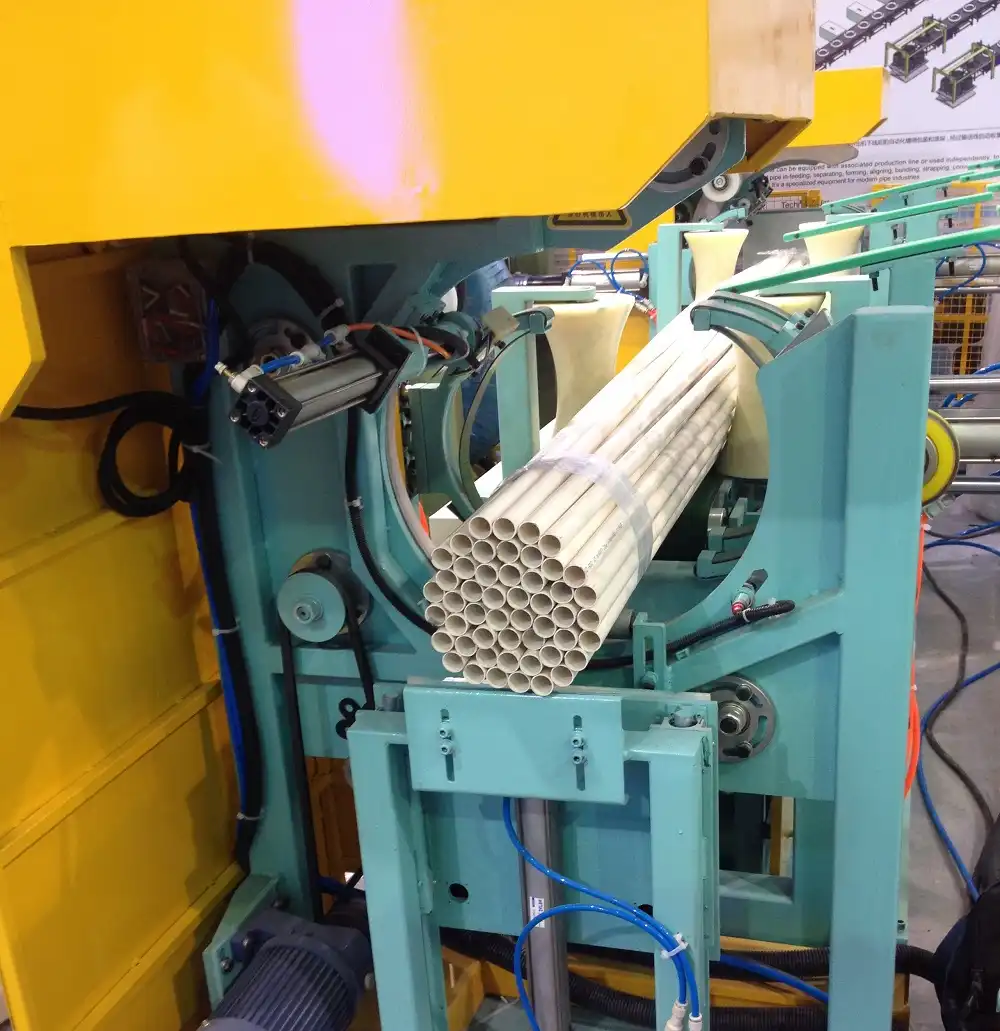
Preventing Problems Before They Arise: Building a Robust Maintenance Program
A well-defined maintenance program is more than just a checklist; it’s a commitment to preventative care. Here’s how to establish a system that keeps your pipe bundling machine running smoothly:
1. Develop a Multi-Tiered Inspection Schedule
Create daily, weekly, and monthly inspection checklists to cover all critical components.
- Daily Checks: Focus on visual inspections, lubrication of moving parts, and clearing any debris.
- Weekly Checks: Include tightening bolts, inspecting belts, and checking fluid levels.
- Monthly Checks: Involve more in-depth inspections, such as sensor calibration, alignment checks, and wear and tear assessments.
2. Adhere to Manufacturer Guidelines
Always refer to the machine’s manual for recommended maintenance tasks and intervals.
- Specific Tasks: The manufacturer knows best about the specific needs of their equipment, including recommended lubricants, torque specifications, and replacement intervals.
- Service Schedules: Follow the manufacturer’s recommended service schedules to ensure optimal performance and longevity.
3. Maintain Detailed Records
Tracking all maintenance activities provides valuable insights for identifying trends and predicting potential issues.
- Data Collection: Record dates, tasks performed, parts replaced, and any unusual observations.
- Trend Analysis: Analyze the data to identify recurring problems or patterns of wear and tear. This information can help you anticipate future maintenance needs and optimize your maintenance schedule.
4. Leverage Condition Monitoring Technologies
Implement technologies like vibration analysis and thermal imaging to detect problems early.
- Vibration Analysis: Detects imbalances, misalignments, and bearing wear.
- Thermal Imaging: Identifies overheating components, indicating potential electrical or mechanical issues.
5. Maintain a Strategic Spare Parts Inventory
Having a readily available stock of critical spare parts can significantly reduce downtime during repairs.
- Critical Components: Focus on stocking parts that are prone to wear and tear or have long lead times.
- Inventory Management: Implement an inventory management system to track parts usage and ensure that you always have the necessary components on hand.
The following table provides a general guideline for maintenance frequency:
| Task | Frequency | Description |
|---|---|---|
| Visual Inspection | Daily | Check for loose parts, leaks, or unusual noises. |
| Lubrication | Weekly | Lubricate moving parts to reduce friction and wear. |
| Belt Tension Adjustment | Monthly | Ensure belts are properly tensioned to prevent slippage. |
| Sensor Calibration | Quarterly | Calibrate sensors to ensure accurate readings. |
| Parts Replacement | Annually | Replace worn parts such as belts, bearings, and blades. |
By implementing a proactive maintenance strategy based on these principles, you can significantly reduce downtime, extend the life of your pipe bundling machine, and maintain consistent output.
3. Empowering Operators Through Training and Skill Development
Well-trained operators are essential for maximizing pipe packaging efficiency and minimizing errors. Comprehensive training programs empower operators to optimize machine performance and troubleshoot minor issues independently.
Proper training and skill development are crucial for optimizing pipe bundling machine performance in high-volume operations. Well-trained operators can efficiently manage machine settings, troubleshoot minor issues, and ensure consistent bundle quality, leading to increased throughput and reduced downtime.
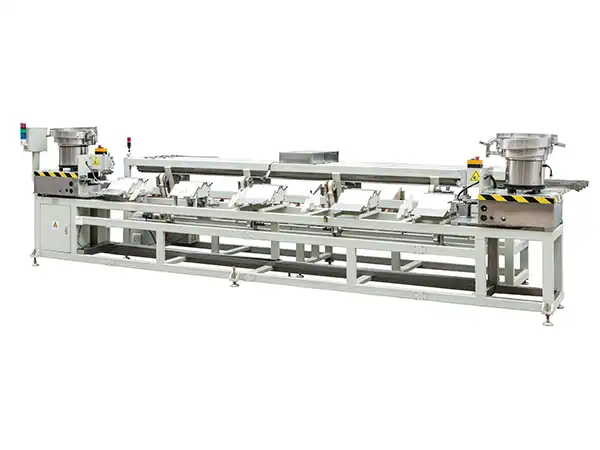
Investing in Human Capital: Maximizing Operator Effectiveness
The skills and knowledge of your operators are just as important as the machine itself. Here’s how to maximize their impact:
1. Comprehensive Initial Training
Provide new operators with thorough training covering all aspects of the machine.
- Setup & Operation: Training must include setup, operation, troubleshooting, and basic maintenance.
- Safety Procedures: Ensure operators are fully versed in all safety procedures.
2. Ongoing Skill Development
Offer regular refresher courses and advanced training to keep operators up-to-date.
- New Technologies: Introduce operators to new techniques and technologies.
- Best Practices: Share best practices and encourage continuous improvement.
3. Certification Programs
Consider implementing a certification program to recognize operators who have demonstrated proficiency.
- Increased Morale: Certification can boost morale and encourage continuous learning.
- Skill Validation: Certifications validate operators’ skills and knowledge.
4. Knowledge Sharing Platforms
Create forums where operators can share knowledge, ask questions, and learn from each other’s experiences.
- Open Communication: Foster open communication and collaboration.
- Documentation: Document best practices and troubleshooting tips for future reference.
5. Empowerment and Autonomy
Empower operators to make informed decisions about machine settings and maintenance.
- Ownership: Encourage operators to take ownership of the process.
- Process Improvement: Empower them to identify and implement improvements to the process.
The impact of well-trained and empowered operators can be significant. Here’s a table illustrating the benefits:
| Feature | Impact on Performance |
|---|---|
| Reduced Downtime | Faster troubleshooting and issue resolution |
| Increased Throughput | Optimized machine settings and efficient operation |
| Improved Bundle Quality | Consistent tension and wrapping patterns |
| Lower Material Waste | Minimized errors and reduced material damage |
By investing in your operators’ training and development, you can unlock significant gains in efficiency, reduce errors, and improve overall performance.
4. Optimizing Material Flow and Layout Design
Efficient material flow and layout design are crucial for maximizing throughput in high-volume operations. A well-organized workspace minimizes bottlenecks, reduces handling time, and improves overall productivity.
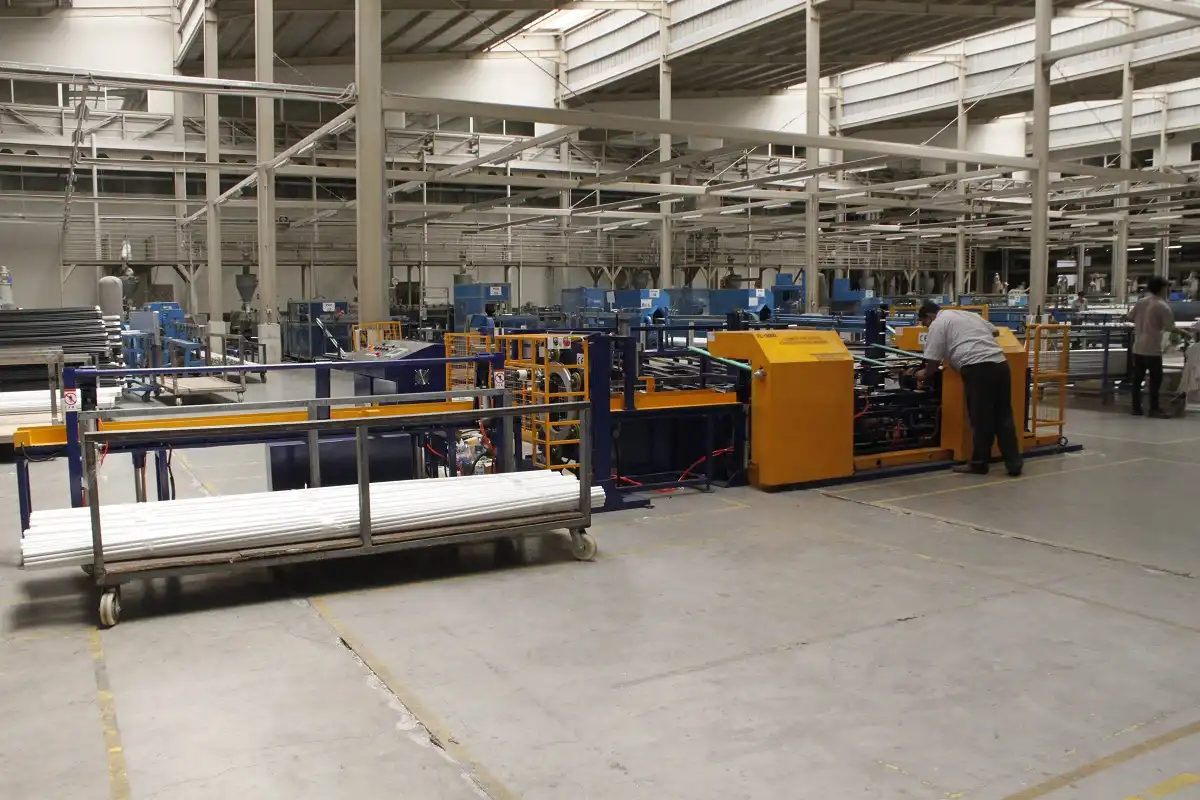
Optimizing material flow and layout design minimizes travel time, reduces handling, and improves overall productivity. Proper staging areas, clear pathways, and ergonomic workstation design contribute to a smoother and more efficient operation.
To optimize material flow and layout design for high-volume pipe bundling, streamline the movement of materials to and from the machine. Implement dedicated staging areas for incoming pipes and finished bundles, ensuring clear pathways to minimize congestion and reduce handling time. A well-organized layout can significantly improve throughput and reduce labor costs.
Streamlining Operations: Design Considerations for Efficiency
A carefully designed layout minimizes wasted movement and ensures a smooth flow of materials, leading to increased productivity and reduced costs. Here’s how:
- Minimize Distance: Position the bundling machine close to the pipe production line or storage area to reduce travel distance.
- Dedicated Staging Areas: Create designated areas for incoming pipes and finished bundles to prevent bottlenecks.
- Clear Pathways: Ensure clear and unobstructed pathways for material movement to avoid congestion.
- Ergonomic Workstations: Design workstations that minimize strain and fatigue for operators.
- Automation: Consider automating material handling processes to further improve efficiency.
Investing in a optimized material flow and layout design can lead to significant improvements in pipe bundling machine performance and overall operational efficiency.
Conclusion
Optimizing pipe bundling machine performance for high-volume operations requires a holistic approach. From machine settings to maintenance, operator training, and layout design, every aspect contributes to overall efficiency. By implementing these strategies, manufacturers can maximize throughput, reduce downtime, and achieve significant cost savings.

